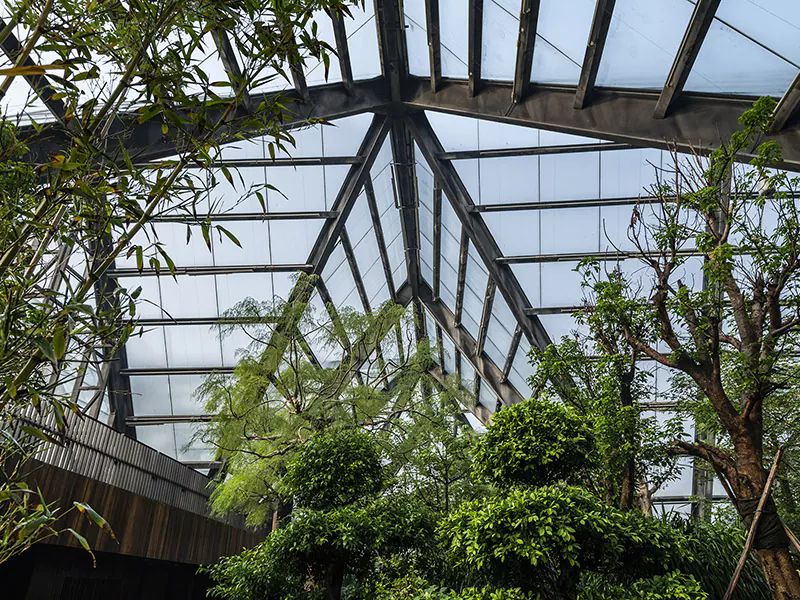Why Are Steel Frame Buildings the Future of Modern Construction?
2024-11-13
In the ever-evolving world of construction, steel frame buildings have gained significant popularity across various industries. From skyscrapers to warehouses, and even residential homes, steel framing has become a cornerstone of modern architecture. But why are steel frame buildings considered the future of construction? What makes them so superior to traditional building methods, and why are so many developers, architects, and engineers turning to steel as their material of choice?
What is a Steel Frame Building?
A steel frame building is a structure built using steel columns, beams, and steel bars to form the skeleton of the building. This framework supports the entire structure, including walls, floors, and roof systems, and is designed to bear the load of the building while providing flexibility in design and function. Steel is favored for its durability, strength, and ability to withstand a range of environmental factors, making it an ideal material for large-scale construction projects.
Why Steel Frame Buildings Are Gaining Popularity
1. Strength and Durability
One of the primary reasons steel frame buildings are so widely used is their unmatched strength. Steel is an incredibly robust material that can withstand high winds, earthquakes, and heavy loads, making it an ideal choice for buildings in areas prone to extreme weather conditions. Unlike wood, which can warp, rot, or succumb to termites, steel remains stable and strong over time, ensuring the long-term durability of the building. This strength also allows for larger open spaces within buildings, as steel can support long spans without requiring intermediate support beams.
2. Speed of Construction
Another significant advantage of steel frame buildings is the speed at which they can be constructed. Steel components are pre-engineered in factories, which means they are ready to be quickly assembled on-site. This prefabrication reduces construction time significantly compared to traditional methods like wood framing or concrete construction. Faster construction means lower labor costs and quicker project completion, which is a major benefit for developers and clients alike.
3. Cost-Effectiveness in the Long Run
While the initial cost of a steel frame building may be higher than traditional materials, the long-term savings are substantial. Steel structures are low-maintenance, reducing the need for costly repairs or replacements down the line. Additionally, the durability and energy efficiency of steel buildings often translate into lower operational costs for owners. For example, steel buildings are highly energy-efficient when properly insulated, helping to lower heating and cooling costs.
4. Fire Resistance and Safety
Steel is naturally fire-resistant, making it a safer option for constructing buildings. Unlike wood, which can burn quickly and compromise the structural integrity of a building in a fire, steel maintains its strength and shape, even at high temperatures. This makes steel frame buildings a safer choice, especially for commercial, industrial, and high-rise structures where fire safety is a top priority. Steel’s fire-resistant properties also contribute to lower insurance premiums for property owners.
5. Flexibility and Design Freedom
Steel offers a high degree of flexibility when it comes to design. Its strength allows for larger, more open floor plans, making it ideal for creating flexible spaces that can be easily adapted to different purposes over time. Whether it's for residential, office, or commercial use, steel frame buildings can be customized to suit a wide range of needs. The ability to integrate advanced architectural features, such as large windows or unique shapes, is also a key advantage of using steel as the main building material.
6. Sustainability and Environmental Benefits
As the world increasingly focuses on sustainability, steel has emerged as one of the most eco-friendly materials in construction. Steel is 100% recyclable, and using recycled steel to create new buildings reduces the need for raw materials and conserves natural resources. Additionally, steel frame buildings tend to be more energy-efficient due to better insulation and air-tightness, leading to reduced carbon footprints. The long lifespan of steel structures also means less waste is generated from repairs and replacements.
Applications of Steel Frame Buildings
Steel frame buildings are used in a wide variety of applications, from commercial buildings to residential homes. Some common uses include:
- Skyscrapers and High-Rise Buildings: Steel’s strength makes it the go-to material for constructing tall buildings, allowing for the safe support of multiple floors.
- Industrial and Commercial Structures: Steel is ideal for warehouses, factories, and distribution centers, providing large, open spaces that can be adapted to a variety of industrial needs.
- Sports Arenas and Convention Centers: Steel frames are often used in the construction of stadiums and arenas, where large, open spaces and clear spans are required for seating and activities.
- Residential Homes: In modern residential construction, steel frames are gaining popularity due to their durability and ability to withstand natural disasters.
Conclusion
Steel frame buildings are not just a passing trend—they represent the future of construction. Their unmatched strength, speed of construction, and cost-effectiveness make them the material of choice for architects, developers, and engineers worldwide. With benefits such as fire resistance, flexibility in design, and sustainability, steel frame buildings are helping to shape a more efficient, safer, and environmentally conscious built environment.
So, whether you're planning a residential project, commercial development, or industrial facility, it’s clear that steel framing is an investment that will continue to pay off in the long run. As we move towards a more sustainable and resilient future, steel frame buildings will undoubtedly play a key role in shaping the cities and structures of tomorrow.



